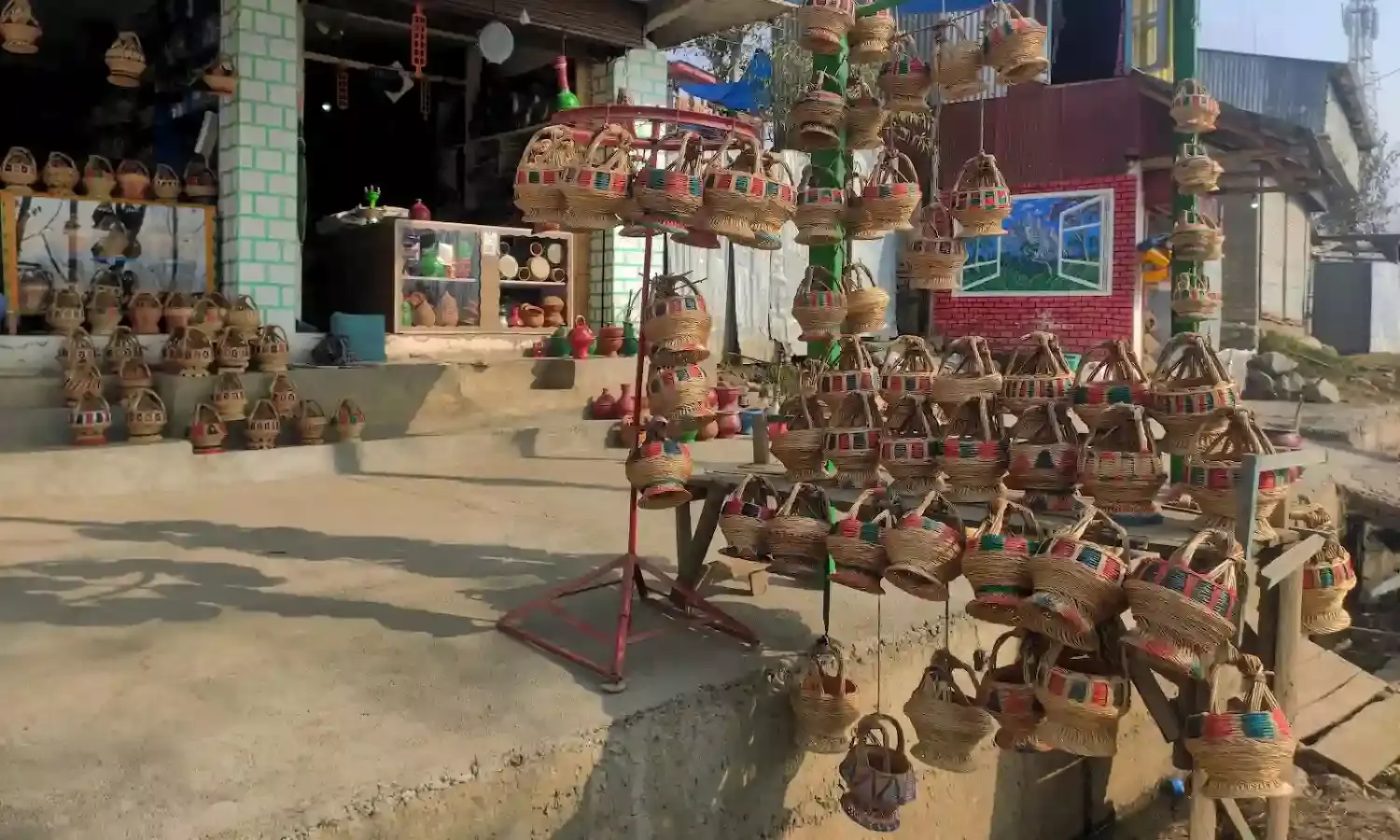A Warm Winter's Tale
Fire nestled in clay, which is cloaked in wicker, the humble Kangri remains a winter essential for many

Foggy mornings, chilly days, and frozen nights define winter in Kashmir. The season enters its harshest 40-day period known as Chillai Kalan on December 22. The temperature is the lowest in this period. Last winter the lowest recorded temperature in Srinagar was -8.0°C.
To keep themselves warm in the harsh weather, Kashmiri people have been using the traditional kangri for aeons. The kangri is an earthen bowl encased in a woven wicker basket, and holds glowing embers which provides the person holding it with a consistent warmth for a long time.
Despite the availability of various electrical and gas-fuelled heaters in the market, the kangri is still used by many. The region frequently experiences power outages as the wires and electric poles are often damaged by heavy snowfall. The snow also results in the closure of the national highway leading to the shortage of gas cylinders' supply, for some days.
An elderly man paints a kangri to decorate it
The kangri sellers have been in the trade for generations. Sheikh Dawood from Bandipora, recalled that his father founded the shop 38 years ago and he now runs it. The shelves of this shop are brimming over with kangris that sell off at a steady pace.
Sheikh Dawood, a kangri seller poses at his shop
"We easily fulfil our daily needs with the earnings from this shop. The electrical and gas heaters can't take the place of kangri. These modern heaters are heavy and need electricity and gas connections while the kangri is light and requires only charcoal to ignite," said Dawood.
A customer at his shop told The Citizen that kangri is an essential survival tool for the winter. Our harsh winter is really difficult to endure without a kangri.I have electric heaters at home, but due to frequent power outages I use the kangri and can warm myself whenever I want," he said, adding "a kangri is portable and light enough for us to carry it with us all times".
Kangris displayed outside a shop in Bandipora district of Jammu and Kashmir
"We carry it everywhere under the pheran (Kashmir's traditional long cloak-like outfit) and also keep it under our bedding. The kangri makes it warm and comfortable to sleep in. It is also used to dry clothes and is an important part of our culture," said a local.
Kangris made in Bandipora are famous all over Kashmir. They have a great demand and are sold in all other districts. So famous that the Bandipora district administration has come up with a plan to install a four-and-a half-feet high kangri near the Deputy Commissioner's office.
Glass enclosure that will soon display a giant kangri
Sixtytwo-year-old Mohammad Ramzan from the Kaloosa area of Bandipora has been making kangris for over four decades. ""When I turned 18, I learned to make kangris from my father. He used to work part-time, but I made it my main source of income," said Ramzan.
Mohammad Ramzan, with his kangri
"I didn't let my son do this work because the demand is low now, and the income earned is insufficient to meet the family's daily necessities. We even owe money to many people. Nowadays, people build hamams in their houses, and therefore no longer require a kangri. They also use hot water bottles and electric blankets to keep warm," he added.
A Kangri maker weaves wicker over the earthen bowl
"We used to work as a group of 10-12 individuals when demand was high and wholesalers would approach us directly to purchase kangris, but now no one comes to us," he added, "although there is a loan scheme but it has no subsidy. The government should come up with new schemes for us so that we can rise again and pay off our debts," he told The Citizen.
All photograpjs by Amaan Bhat


